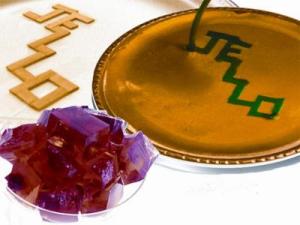Jun 17 2010
With "hands-on" experiences in childhood and adolescence having sparked so many science careers, scientists in Canada are describing a quick, simple, safe, and inexpensive way for kids to participate in making microfluidic devices.
Those devices are at the heart of lab-on-a chip, inkjet printing, DNA chip, and other technologies. The scientists' instructions for making microfluidic devices from Jell-O® type dessert mixes and Popsicle-type sticks, and using them to demonstrate the basics of microfluidics, appear in ACS' Analytical Chemistry, a semi-monthly journal.
 Jello-O® type desserts can provide a safe, inexpensive way to teach kids about the microfluidic devices at the heart of lab-on-a-chip, inkjet printing and other technologies.
Jello-O® type desserts can provide a safe, inexpensive way to teach kids about the microfluidic devices at the heart of lab-on-a-chip, inkjet printing and other technologies.
In the report, Eric Lagally and colleagues note that most scientists remember a defining moment in youth that sparked a life-long interest in science. It may have been building an electronic circuit, for instance, or watching cells divide under a microscope. Microfluidics, they note, has the potential to revolutionize medicine and biology, reducing an entire laboratory of instruments for analyzing blood, urine, and other materials to the size of a postage stamp. Until now, however, hands-on experience with microfluidics has been impossible because of the expense and potentially toxic chemicals involved in making microfluidic devices.
The article describes using Popsicle-type craft sticks taped to the bottom of a Styrofoam plate to form large-scale versions of the minute channels in actual microfluidic devices. Once the sticks are in place, students pour in liquid Jell-O® and let it solidify in a refrigerator. After the devices have firmed up, students poke small holes into the tiny channels. Using small straws, they can feed liquid into the channels. In one experiment, the scientists put tiny strips of pH paper into the channels, and added different liquids. Since Jell-O is translucent, the researchers could watch the color of those test strips change as the liquids hit them. Since then, they have been working to build more complicated devices from the classic dessert.
Source: http://portal.acs.org/